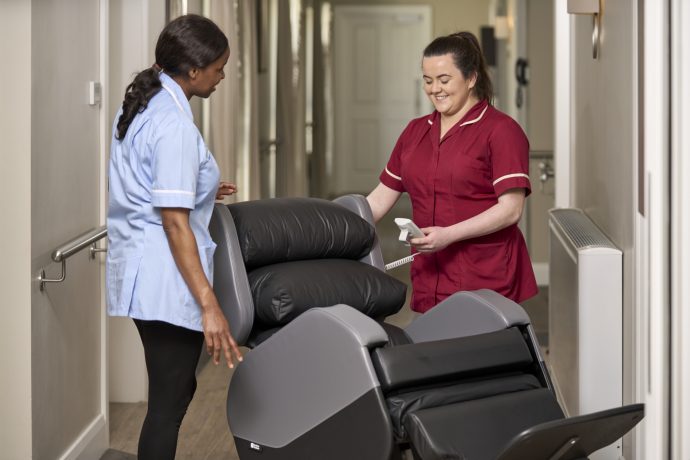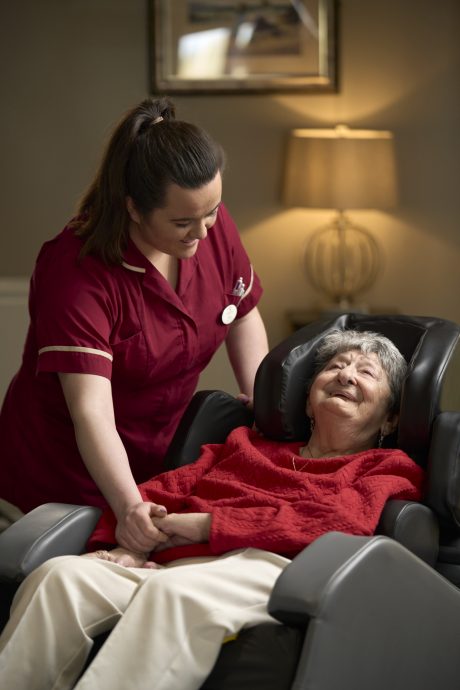
2nd September 2025
Empowering clinicians with expert-led training on clinical seating, pressure injury prevention, and best practice.
Learn More

Let our online product finder guide you through our simple steps to choose the chairs that best meet your patient’s needs.
Seating Solution FinderThe Envelo cushion provides excellent pressure redistribution and comes as standard on all Seating Matters chairs, meeting the clinical needs of most clients.
Explore Envelo RangeSeating Matters specialises in clinical, therapeutic seating solutions designed to improve patient care and safety, offering products for pressure injury prevention, postural support, and mobility assistance in healthcare settings.
Learn MoreDiscover how Seating Matters has transformed lives with our innovative seating solutions - read our inspiring customer success stories now!
Customer StoriesUsed in academia, in clinical practice and with caregivers around the world to guide their practices around specialist seating.
Download Free Handbook

With heightened awareness around infection control due to coronavirus, we conducted a simple experiment to highlight areas of infection risk in fabric-covered chairs. Manufacturers and suppliers of products who supply into long term care homes, community equipment recycling stores and hospitals should use materials that are suitable in preventing the spread of bacteria.
However, many chairs used in care environments are covered in hard-to-clean fabrics, which can absorb fluids deep down into the structure of the fibres and can therefore be very hard to clean and disinfect. Materials such as Chieftain vinyl upholstery, and Dartex Performance fabric, can be infused with an antibacterial substance, which also hinders the growth of mildew. QCS Expert Health and Safety Contributor, Sally Beck, describes the importance of infection control in soft furnishings. Here we share an extract from her writing;[i]
When conducting an infection control risk assessment the impact of furniture on the spread or prevention of pathogenic microorganisms should be evaluated. Upholstery can allow bacteria to thrive and be spread from one person to another. On a daily basis, in a communal environment, pathogenic microorganisms can be transferred from reservoirs on high use hand-touch sites, including soft furnishings.
The decision as to which soft furnishings to use when designing a room that discourages the growth of bacteria is important. All soft furnishings used within all areas should be chosen for ease of cleaning and compatibility with detergents and disinfectants. Room furnishings should be of a material that is impermeable, preferably seam-free or heat-sealed.
It is highly likely that fabrics on soft furnishings will become stained through constant use, and there needs to be a means of ensuring that they are adequately cleaned. The ease of cleaning is an important consideration in the choice of coverings on furniture. If soft furnishings are soiled and cannot be cleaned they will need to be replaced. This has a financial implication for the management of the service, whether this is a care home, GP surgery or dentist.
One example of an infection control risk assessment is seating. The type of seating needs to be reviewed, especially in communal areas where there is high traffic of services users and visitors.
Their material should be water and stain resistant, and capable of withstanding disinfection with a chlorine-based disinfectant. Vinyl is preferable as it is easy to clean and it is also durable and robust.
The cleaning of vinyl seats is also important to ensure that the seats last. Petroleum and alcohol-based cleaners will dry out the vinyl over time, leading to cracks, and so should not be used. Disposable cleaning wipes can be used to clean seating areas at the end of each day. Chairs and treatment couches with rips or tears are no longer impervious to contamination and should be replaced.
Management decisions on selecting soft furnishings need to be based on assessing the following:
In summary, management needs to spend time assessing the type and quality of soft furnishings. The end use of soft furnishing should be considered in the selection process.
The quality of finishes in all areas should be easily cleaned, durable, fit for purpose and resilient. QCS has policies on infection control to meet your CQC requirements.
The Department of Health and Social Care also highlighted the importance of choosing the correct soft furnishings when discussing infection control in the built environment.
“Soft furnishings (for example, seating) used within all patient areas should be chosen for ease of cleaning and compatibility with detergents and disinfectants. They should be covered in a material that is impermeable, preferably seam-free or heat sealed.
Fabric that becomes soiled and stained cannot be adequately cleaned and will require replacement.”[ii]
Producers of vinyl upholstery fabric have known for some time that their materials are easier to clean and disinfect than fabric upholstery, as a result, this makes it easier for healthcare environments to prevent the spread of bacteria and assists with infection control.
In November 2000, Infection Control Today highlighted the results of a study conducted by scientists at the Departments of Medicine and Pathology at Northwestern University Medical School, the Infection Control and Prevention Department, and the Prevention Epicenter, Northwestern Memorial Hospital.
“The study found that vancomycin-enterococci (VRE), a drug-resistant bacteria, can survive on and be transmitted through patient contact with fabric upholstery in a healthcare setting. This means that a patient carrying these bacteria could contaminate a chair, for example, and a second patient could pick up the bacteria as much as one week later through direct contact with the chair's upholstery.
However, while vinyl chairs in the test were contaminated with VRE, the bacteria did not survive routine cleaning of the vinyl upholstery. This led the researchers to conclude that an easily cleanable, nonporous material such as vinyl can be significant for infection control in healthcare settings.
The research highlights the importance of being able to disinfect a patient's room when he or she leaves the hospital.
Sign up to our mailing list to get practical tips and latest research delivered to your inbox!
Take the next step to achieve clinical excellence and a 24 hour package of care for patients.

Arrange a free, no obligation assessment of clinical, therapeutic seating.

Schedule a call at a time that suits you to speak with our experts.

Download your copy of The Clinician's Seating Handbook

2nd September 2025

15th August 2025

15th August 2025